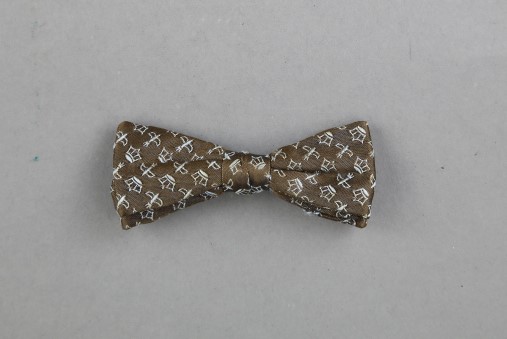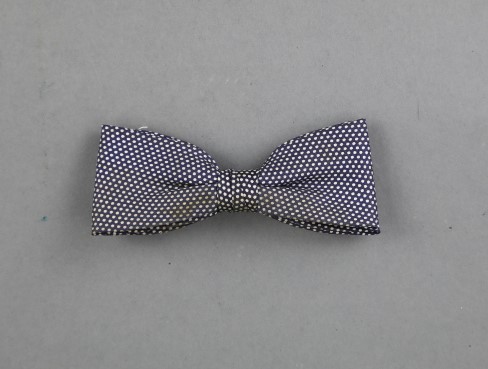January 8, 2020

Image from HHM Collections
Carl Richard Jacobi was an author and Minneapolis resident throughout his entire life. Considered phenomenal by contemporaries such as H.P. Lovecraft, Jacobi’s writing spanned from pulp fiction to journalism to horror. His personality showed in his work and his attire, demonstrated by his collection of bow ties which he donated to Hennepin History Museum’s collection in 1989.
Jacobi wrote stories at every stage of his life. In high school, he wrote and shared dime novels with other students. At the University of Minnesota, he majored in English Literature and sold his first detective story Rumbling Cannon to Secret Service Stories publishing company. Unfortunately, the publisher folded soon after the sale and the novella brought Jacobi no money.
After graduating in 1930, Jacobi worked for the Minneapolis Star. He was a news reporter, sub-editor, and reviewer of plays and books. He didn’t stay there long, though, and returned to full-time fiction writing. This was a daring decision during the Great Depression, and it seemed it wouldn’t pay off.
Jacobi faced many rejections from publishing agencies. Editor Farnsworth Wright of Weird Tales publishing company rejected Jacobi’s Revelations in Black, a vampire tale set in an e
erie stone farmhouse. However, Wright rethought his decision and contacted Jacobi weeks later, asking for the story.
It wasn’t until 1935 that Jacobi found a second job as a continuity writer for his local radio station. He stayed there for five years, writing fiction stories all the while. His work tended to remain in the genres of horror, fantasy, and sci-fi. Many of the settings were inspired by his cabin at Minnewashta in Carver County.

Image from HHM Collections
His most successful works included The Unpleasantness at Carver House, which author Don Herron called a “ghoulish tale of horror and madness…A feeling of unease pervades the story, and its many macabre implications prey on the imagination,”.
In 1942, Jacobi’s parents fell ill, and he began working for Honeywell Inc., writing in his spare time. It was around this time the Jacobi was diagnosed with Parkinson’s disease. As the disease progressed through the years, it became more difficult for him to communicate.
His final work was titled Smoke of the Snake and was published in 1994. According to his friend and editor Dwayne Olson, Jacobi had plenty of stories in his head, but could no longer get the words out. Three years after his last publishing, Jacobi passed away at age eighty-nine.
Carl Richard Jacobi was one of many short story authors from Minnesota. He never left Minneapolis and was a founding member of the Minneapolis Fantasy Society. His works have been praised and critiqued throughout the ages, but his dedication to his craft never wavered.

Image from HHM Collections
Author Bio: Written by Summer Erickson, Collections Intern at Hennepin History Museum. Summer is working toward a BA in Art History at the University of St. Thomas in St. Paul. Her focus is on Museum Rituals and Street Art.
Sources:
“Carl Jacobi, 89; wrote pulp fiction, fantasy stories”. Star Tribune. August 28, 1997.
https://startribune.newspapers.com/image/194283495/?terms=%22jacobi%22
“Carl Jacobi Makes Hair Stand Up”. Star Tribune. November 2, 1947.
https://startribune.newspapers.com/image/181009049/?terms=%22jacobi%22
“City author’s fine tales of fantastic”. Star Tribune. March 25, 1973.
https://startribune.newspapers.com/image/185167320/?terms=%22jacobi%22
“Obituary: Carl Jacobi”. Independent. September 2, 1997.
https://www.independent.co.uk/news/people/obituary-carl-jacobi-1237097.html
“Smoke of the Snake”. Star Tribune. October 16, 1994.
https://startribune.newspapers.com/image/193034371/?terms=%22jacobi%22
